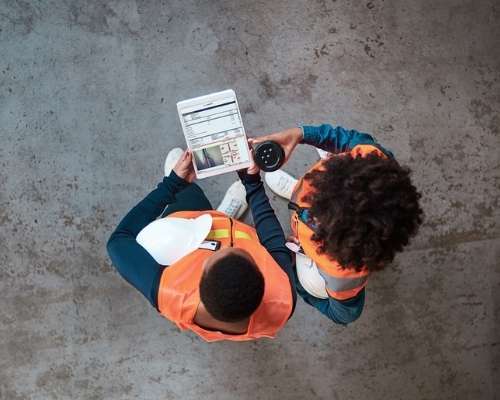1 Minute Read
May 18, 2022
0%

We’re living in a particularly volatile world right now. Global economic conditions are subject to more violent swings than ever before and it can be hard to know where you and your construction business stand.
If pandemics, recessions, supply chain challenges, labour shortages and other business woes have taught us anything, it’s that we need to be agile, able to adapt quickly. That means scaling your construction organisation to not just protect against future challenges, but to thrive in them.
But how do you do that? Where do you start?

Let’s put this volatility into perspective for a moment. Between June 2020 and May 2021—during the height of the COVID-19 pandemic—the construction industry experienced both its lowest and its highest point in more than 15 years. That is an absolute rollercoaster of change and while things may be starting to settle down into a new normal, it’s wise to prepare for further fluctuations.
There’s an old saying: “by failing to prepare, you are preparing to fail.” Sure, it’s a little flowery, but there’s also a lot of truth in this notion. Changes can come suddenly and unexpectedly in life and in business, so making sure you’re in the best possible shape to meet them is just smart.
Now, more than ever, the construction industry needs to be able to adapt at the flip of a switch. Unfortunately, the outdated software, data workflows and siloed working styles that still permeate the industry today simply aren’t designed to cater to this level of flexibility. Having a project management setup that isn’t connected in real-time to your other construction workflows and disciplines might be setting your company up for failure.

The fact is, connected, cloud-based digital technology isn’t just a “nice thing to have,” it is key to maintaining business continuity and agility. If you’re feeling your business is slow to respond to opportunities and threats, perhaps some of these symptoms are also familiar to you:
If any of these points sound familiar to you, chances are you’re not working with an optimum set up. It can be a difficult thing to accept, but we’re here to make things easier for you. Just check out our recent blog on the benefits of using web-based software and you’ll quickly realise the huge improvements that could be made.

As silly as it might sound, there is an “easy button” of sorts for construction management. While it won’t build Rome in a day, a connected construction management suite, run in a hosted cloud environment, can essentially automate a lot of those manual and cumbersome processes that have dragged construction down. Leveraging the real-time computing power of the cloud, the data functions and related construction workflows can now be run in minutes versus days or even weeks.
Imagine, for instance, you have an important report that needs to be sent to several different departments. In a siloed set up, you’d have to distribute that into several different places to reach everyone. Each recipient then might need to import the data from that report into their own systems for deeper analysis. Someone might spot an error that needs attention. But it is only addressed with one other recipient rather than informing all or correcting only one shared version of the document. That means the error has now slipped into two other channels unaddressed. This could translate into any number of issues, from overpaying a vendor, to using the wrong building materials.
With a connected construction suite, however, shared data means interconnected workflows and teams. To think about it in project management terms, it’s sort of like having your own online plan room, except that it brings everyone to the table—not just your project planning, drawings and specs folks. What gets identified in approved estimates can be used to auto-create new projects and project docs and forms. When work gets underway, completed work that is recorded also updates accounting practices like work-in-progress or job costs.

These are just a few examples, but it paints a true picture of the power and flexibility a connected construction suite can bring. The importance of having a single source of truth that everyone is working from cannot be understated. It allows you to develop actionable business insights, ensure accuracy in everything from budgets to resources and this will ultimately improve your customer experience. The greater efficiency it provides can have you walking away from a finished job ahead of time and under budget and have your client coming right back to you for their next project.
And speaking of those future projects, getting connected now gives you the ability to adapt to new technology advancement, and use detailed tools like analytics to gain the construction intelligence you need to spot trends, identify areas where improvements can be made, and even accurately forecast how future projects will fare (and whether it makes sense to bid on them or pass).
Completely overhauling the way that your business works can be a daunting proposition, but there are significant rewards you can reap from doing so. A connected construction experience can really help you take your business to the next level, and we know you won't be disappointed with the results.
A siloed approach to construction may have worked in the past, but as the industry—and the world around us—continues to change, its limitations become more and more apparent. Removing them can help reduce human error, streamline complex workflows and, crucially, even save you money—what’s not to love?
Learn more about how Trimble Viewpoint can help you get started.
4 Minute Read
November 18, 2021
5 Minute Read
December 15, 2021